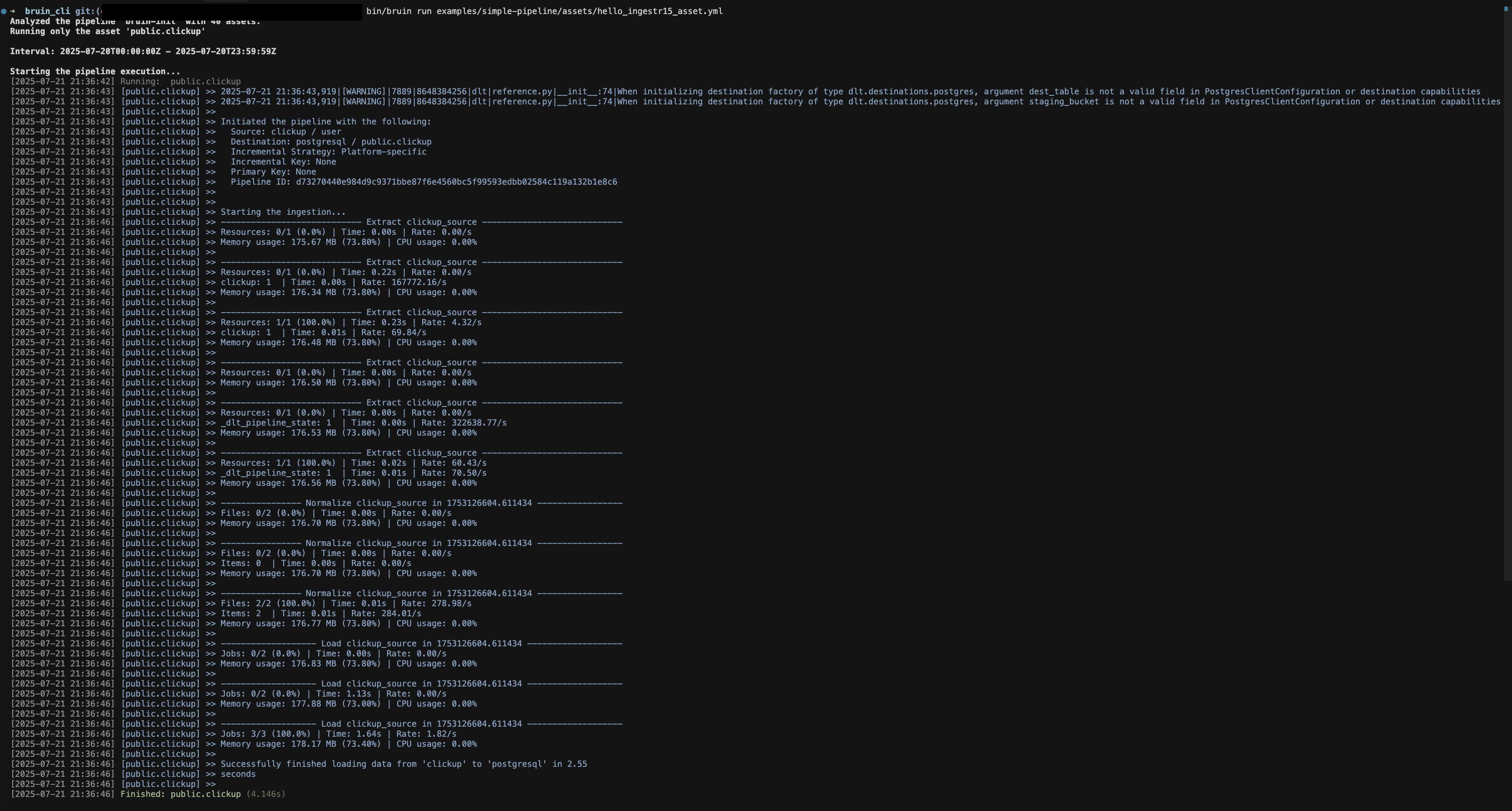ClickUp
ClickUp is a cloud-based productivity platform designed to help teams and individuals manage tasks, projects, and workflows in one place.
Bruin supports ClickUp as a source for Ingestr assets. You can ingest data from ClickUp into your data platform.
To set up a ClickUp connection, add a configuration item in the .bruin.yml file and in your asset file. The configuration requires api_token.
Step 1: Add a connection to the .bruin.yml file
yaml
connections:
clickup:
- name: "clickup"
api_token: "token_123"api_token: personal token used to authenticate with the ClickUp API.
Step 2: Create an asset file for data ingestion
Create an asset configuration file (e.g., clickup_ingestion.yml) inside the assets folder with the following content:
yaml
name: public.clickup
type: ingestr
parameters:
source_connection: clickup
source_table: 'tasks'
destination: postgresname: The name of the asset.type: Alwaysingestrfor ClickUp.source_connection: The ClickUp connection name defined in.bruin.yml.source_table: Name of the ClickUp table to ingest.destination: The destination connection name.
Available Source Tables
| Table | PK | Inc Key | Inc Strategy | Details |
|---|---|---|---|---|
user | id | - | merge | The authorised user profile |
teams | id | - | merge | Workspaces available to the authenticated user. In ClickUp, a "team" in the API is equivalent to a workspace, which is the highest-level container for all spaces, folders, lists, and tasks |
spaces | id | - | merge | Spaces available within a workspace. Spaces are major sections used to organize work, such as departments, projects, or business units. Each space can contain folders, lists, and tasks |
lists | id | - | merge | Lists contained in each space. Lists are collections of tasks, often representing projects, sprints, or workflow stages |
tasks | id | date_updated | merge | Tasks belonging to each list |
Step 3: Run asset to ingest data
bruin run assets/clickup_ingestion.ymlRunning this command ingests data from ClickUp into your Postgres database.
